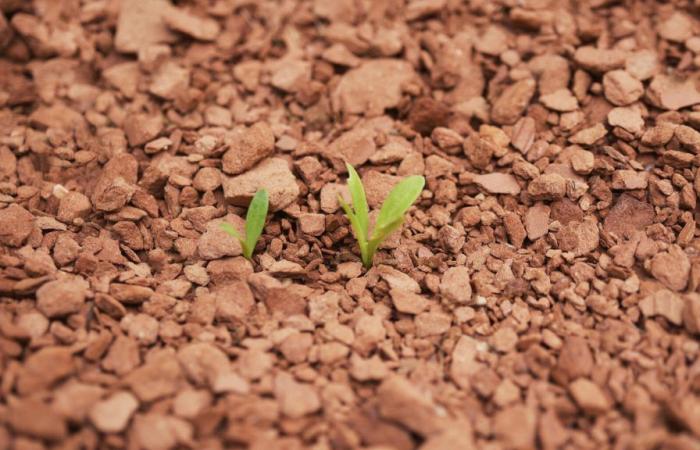Anthony SEJOURNE / Getty Images/iStockphoto
Researchers have found a plant that could survive on Mars
SPACE – A temperate climate? Plenty of oxygen? Nutrient-rich soil? For what faire ? Syntrichia caninervis, she doesn’t care, and for scientists who are looking for how to colonize the planet Mars, this is great news. The Chinese team from the Xinjiang Institute of Ecology and Geography, which published its efforts in the journal The Innovation June 30, is formal: the plant is a “ promising pioneer to colonize extraterrestrial environments ».
Certainly, Syntrichia doesn’t really look like much. Ranging from light green to dirty black, rather rickety, it doesn’t really have the characteristics of a cheerful living room plant, and that’s not what we ask of it. Rather than vegetating near the couch, our champion is more comfortable in the most unfavorable places for life, from the scorching American Mojave Desert to Antarctica and its freezing temperatures. This is precisely why scientists tested its limits, and for that, they had to go very far.
Wikipedia
Syntrichia caninervis sometimes has three-day beard growth. (Image: Wikipedia)
Our foam is resistant to temperatures down to -196° Celsius, it is also capable of drying out almost completely, losing 98% of its moisture, then returning to its original shape with a little drizzle. Finally, what’s more, our Syntrichia caninervis resists gamma rays very well. For all budding astronomers, that means a lot.
Even the killer rays can’t overcome it
Gamma rays are cosmic emissions, produced by nuclear reactions in the hearts of stars, which emit them regularly, in pulsations. Our sun, like any other star, emits phenomenal quantities of it, like other radiation: X-rays, UV, etc. But gamma rays are particularly dangerous for life.
They modify the chemical bonds between atoms, and their effects can go as far as genetic modifications of all kinds, to pure and simple death, for humans as for the rest of life. Our Earth is surrounded by a strong atmosphere, which filters out these dangerous rays, allowing life to thrive. This is not the same situation on Mars, which does have an atmosphere. But it is so thin and fragile that it largely allows radiation, including gamma, to pass through.
Hence the importance of our grayish moss, which is not afraid of anything. Neither the poor Martian soil, nor its lack of oxygen, nor its terrible temperatures (it is on average -63° Celsius), nor even the journey to get there. Because preserving life, in a space journey that would last about 9 months, is also a headache, partly because of these same gamma rays.
The use of this plant opens the door to ambitious, very ambitious ideas. By settling on Martian soil Syntrichia en would gradually change the composition, like in the desert, making it more likely to support other forms of life. By releasing oxygen into the atmosphere, it would also make the air more in line with that found on Earth. And finally, there is its genetic capital: why not imagine that one day, wheat boosted with the gene of Syntrichia cannot grow on the red planet?
Also see on Le HuffPost :
Reading this content may result in cookies being placed by the third-party operator who hosts it. Taking into account the choices you have expressed regarding the deposit of cookies, we have blocked the display of this content. If you wish to access it, you must accept the “Third Party Content” category of cookies by clicking on the button below.
Play Video






